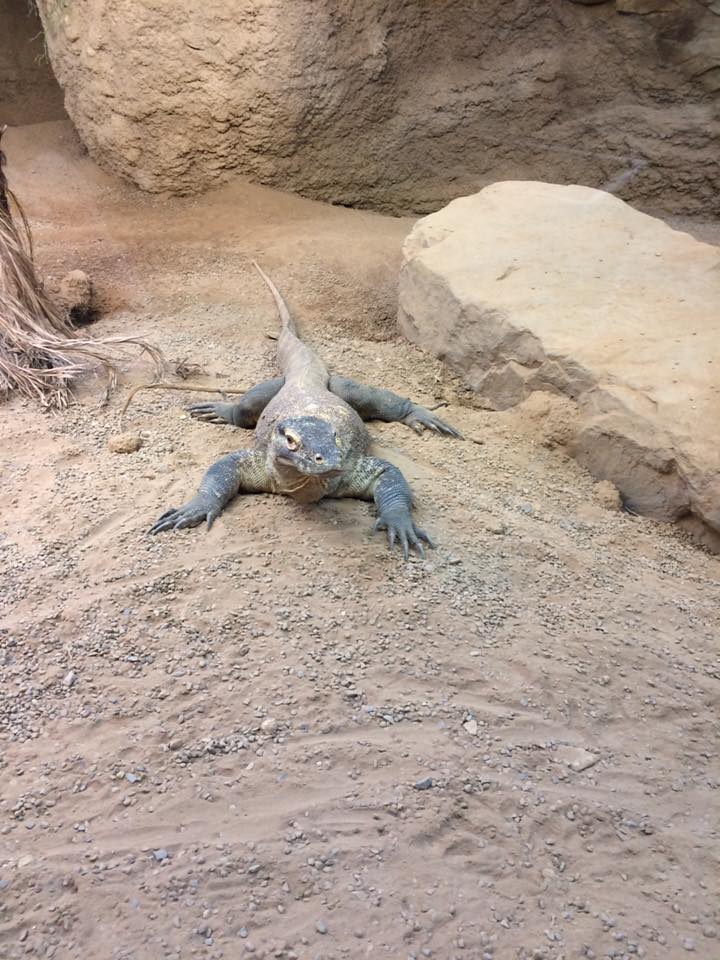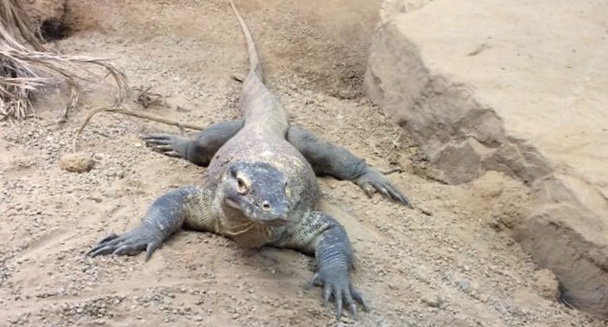ANIMAL: Komodo Dragon Varanus komodoensis Type of Animal: Monitor Habitat: Tropical dry forest, monsoon forest, savanna, tropical savanna forest, scrubland, grassland, open woodland, hillsides Location(s): Indonesian islands of Komodo, Rinca, Flores, Gili, Montang, & Padar Appearance: Gray w/ long tail and claws, male much larger than female, largest lizard in world. Food/Diet: Carrion, pigs, deer, goats, horses, water buffalo, cattle, monkeys, birds, geckos, young komodos, monitors, snakes (including venomous species & pythons), eggs, small mammals, insects, spiders, & scorpions. They’ll even eat humans. Status in Wild: Endangered Conservation: Breeding in zoos and breeding centers Lifestyle: Solitary, though groups come together at food sites. Among groups, dominant male at the top. Additional Info: Called: Male Female Young-Hatchling Group-Leap Weight: Male-200 lbs Female-150 lbs Young-3.52 oz Gestation: 8-9 months Body Length: Male-8-10 ft Female-7.5 ft Young-1.25-2 ft Life Span: 30 years in wild, up to 50 years in captivity Tail Length: Male-8-10 ft Female-7.5 ft Young-1.25-2 ft Young preyed on by adults. Adults have no predators at all. It’s disputed whether they’re venomous or not but they do have a toxic bacteria in their serrated, jagged teeth that infects prey. Females provide care for eggs but leave before eggs hatch. Endangered due to persecution, poaching, loss of prey, hunting for skin, habitat loss, natural disasters, & small number of breeding females. Fights vicious & sometimes deadly, involving lots of claw slashing. During courtship, the male rubs the female’s chin, bites her neck, and scratches her. Sexually mature at 5 years old. They can eat 80% of their body weight in one feeding. They have a very keen sense of smell. They can run up to 11 mph in short bursts. They can go through 4-5 sets of teeth in their lifetime. Young komodos spend most of their time in trees away from terrestrial adults. Fun Fact(s): They’re also called “land crocodiles.” In some areas where no males present, females reproduce by parthenogenesis to hatch male offspring. These lizards can be very dangerous, especially when feeding. Some individuals in captivity, especially males, can be quite docile. However, even most docile dragon still highly dangerous.

